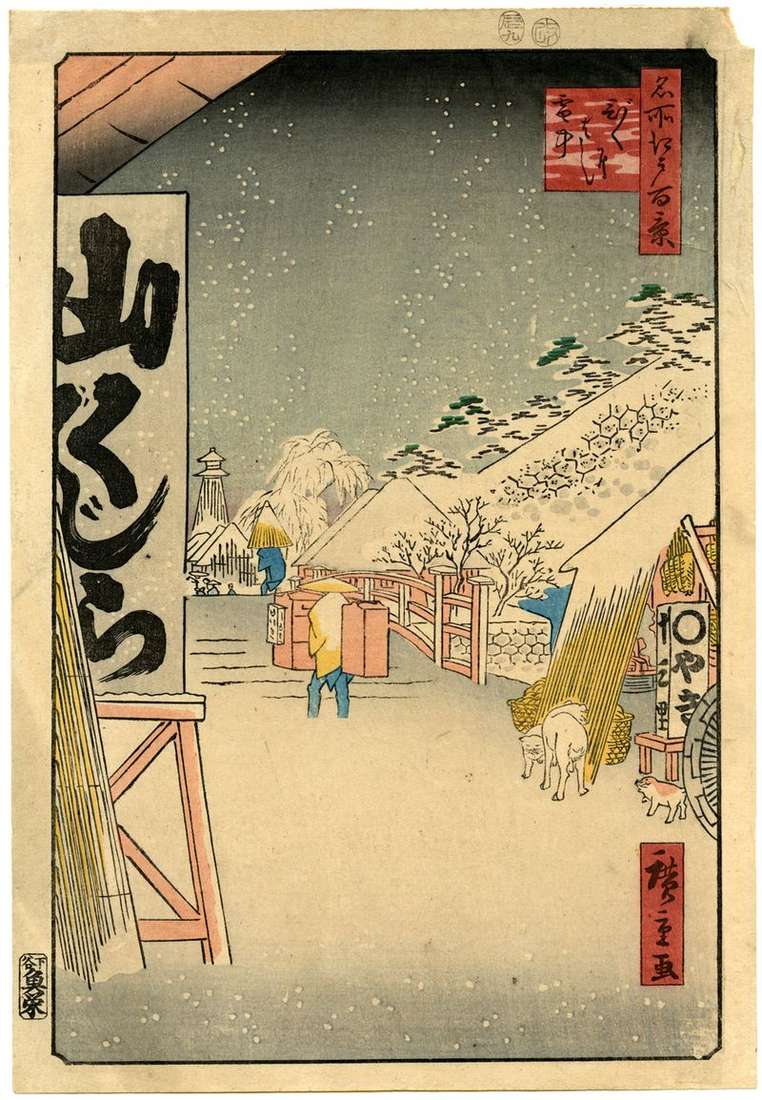
The Bikunibashi Bridge was the first bridge to cross the river Kebasigawa, which flowed from the Outer Ditch in the east of the Edodze Castle. First, the word “Bikuni” denoted female nuns, but in the era of Edo, they were called girls of easy virtue, probably because of the costume they wore – it resembled the clothes of Buddhist nuns. Near the bridge were low-grade brothels – bikuni-yado, where they lived. Hiroshige depicts the daily life of the city.
In the background, you can see a fire tower. On the bridge of Bikunibashi there is a seller of hot sake and oden cakes. In the foreground on the left is a sign of the restaurant Ovariya with the inscription – Yama-kudzira. Here they sold meat dishes, primarily from wild boar, although “Yamakudzira” is translated as “mountain whale”. On the other side of the road, on the lantern of the tent, the inscription “Mariaki Dzyamsambi ” – is roasted koloboks from sweet potato. Batat was one of the favorite dishes of the townspeople, especially in winter. On the right, behind the stone fence was located the quarter of the Daimyo mansions – Daimekatsi. The strip of the boccas, passing along the top edge of the engraving, in the later version becomes more intense and increases in size. More bright spots are formed on the white snow of the passer-by.
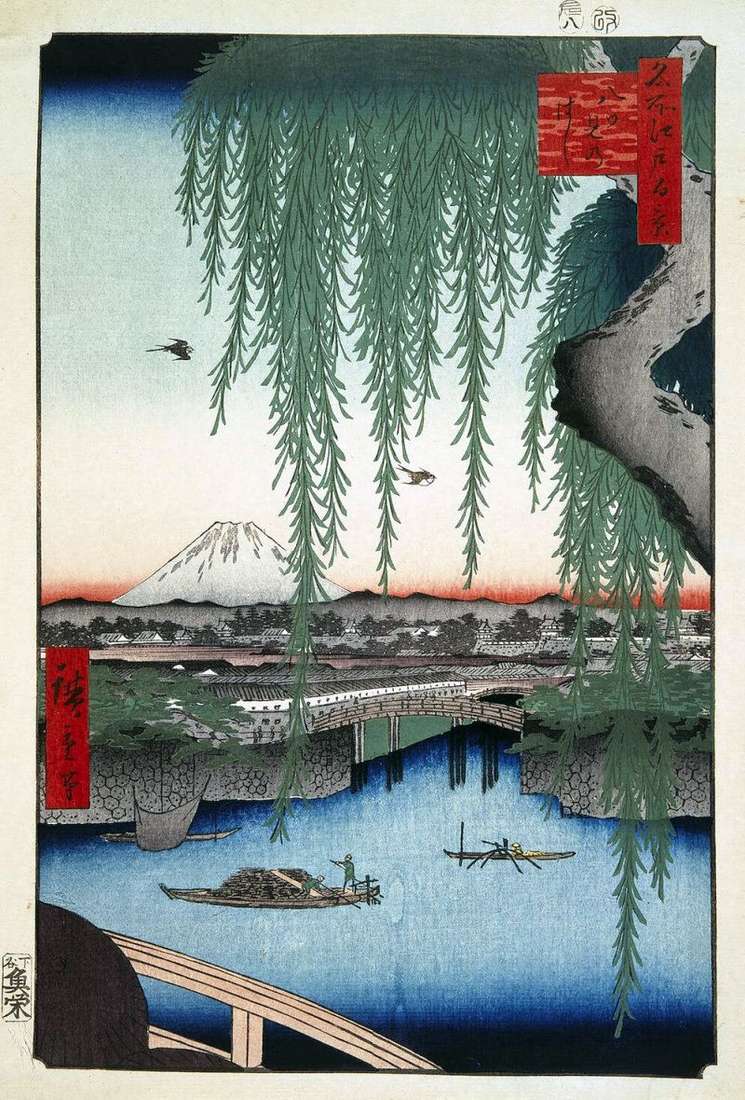 Yayoumi Bridge by Utagawa Hiroshige
Yayoumi Bridge by Utagawa Hiroshige Suidobashi Bridge in Surugaday by Utagawa Hiroshige
Suidobashi Bridge in Surugaday by Utagawa Hiroshige The Kebasi Bridge and the Takegashi Embankment by Utagawa Hiroshige
The Kebasi Bridge and the Takegashi Embankment by Utagawa Hiroshige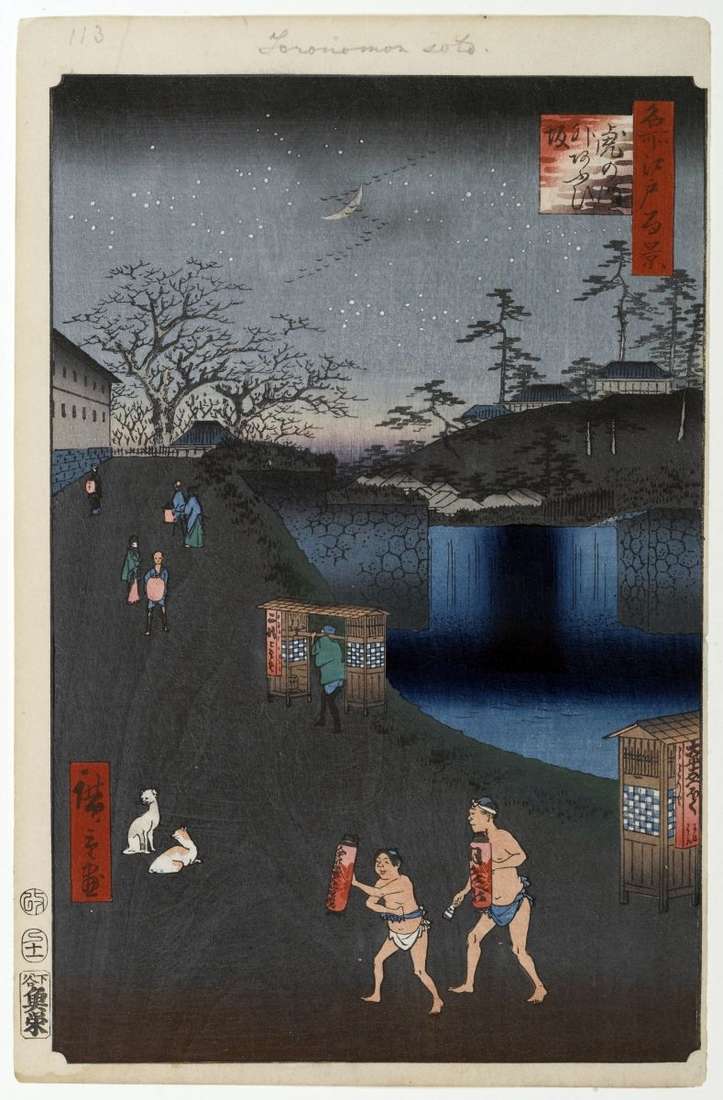 Slope of Aoizak outside the gates of Toranomon by Utagawa Hiroshige
Slope of Aoizak outside the gates of Toranomon by Utagawa Hiroshige Nihonbashi bridge in clear weather after snowfall by Utagawa Hiroshige
Nihonbashi bridge in clear weather after snowfall by Utagawa Hiroshige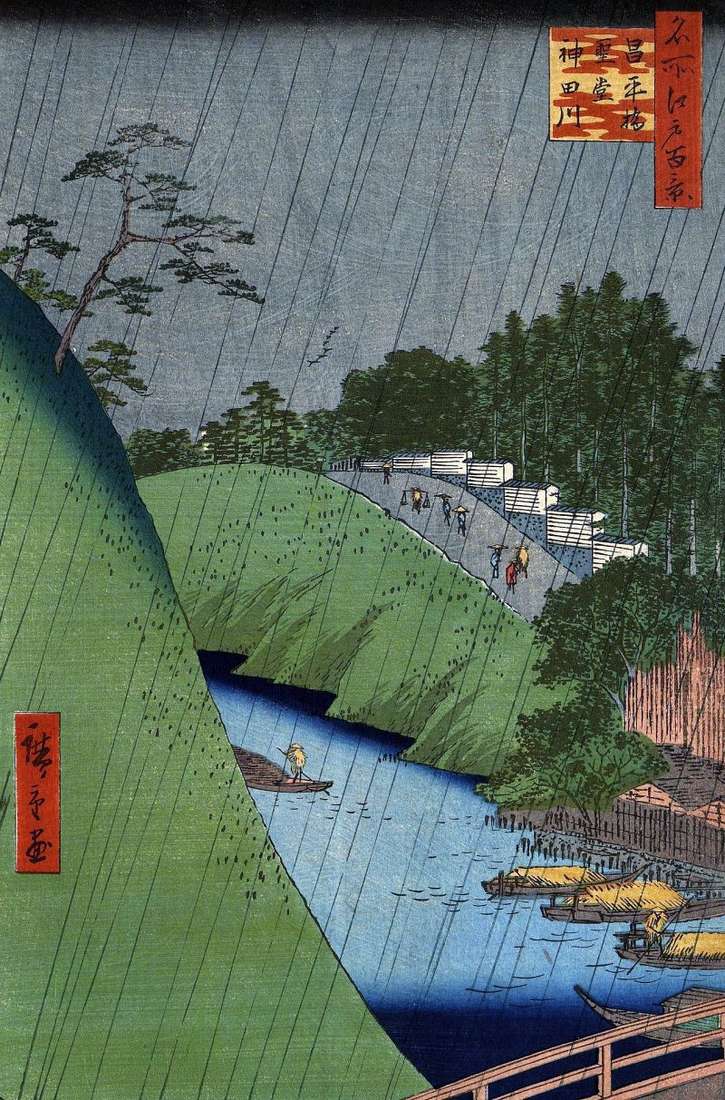 Sehaybashi Bridge, Confucius Temple and Kandagawa River by Utagawa Hiroshige
Sehaybashi Bridge, Confucius Temple and Kandagawa River by Utagawa Hiroshige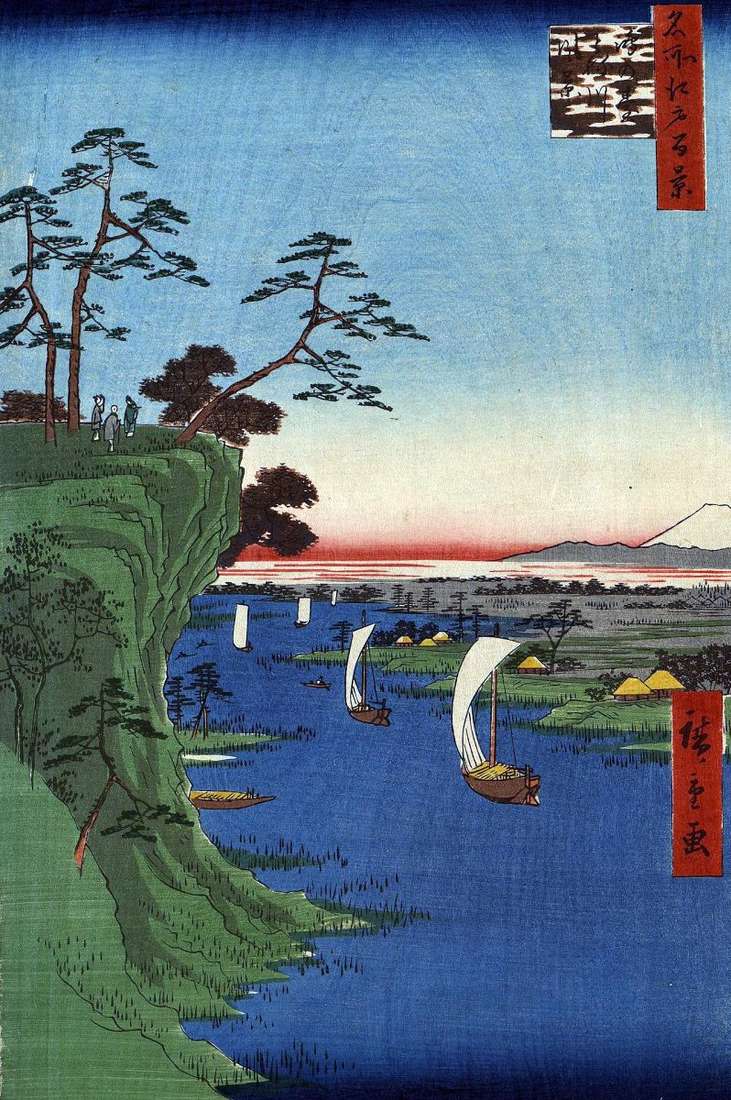 Konodai Hill, Tonegawa River by Utagawa Hiroshige
Konodai Hill, Tonegawa River by Utagawa Hiroshige The Ohashi Bridge in Senju by Utagawa Hiroshige
The Ohashi Bridge in Senju by Utagawa Hiroshige